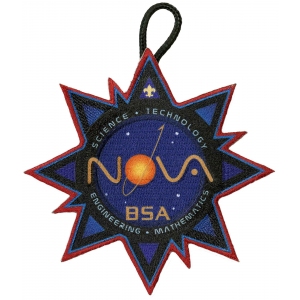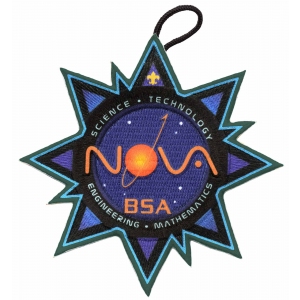Environmental Science: New Things From Old
This activity can be done individually or in a group. Your task is to investigate the logistics and environmental value of recycling and repurposing used items into new products and to invent a product that is predominantly made from used item(s).
Part 1: Research
- Find two products made primarily from recycled materials. Describe the
recycling process and the production process for each of these products.
Discuss with your mentor:
- The impact of these recycled products on the environment compared with the impact of the same products made with all-new materials
- The environmental impact of the two products regarding pollution control and remediation, such as hazardous byproducts in the air, water, and waste
- The environmental impact of the two products regarding resource conservation and management, such as animal life, plant life, water, fuel, and protected lands/sites
- The environmental impact of the two products regarding production infrastructure, such as land use, municipal planning, transportation, and energy
Part 2: Product Invention and Report
- Develop your own design for a product that can be made by recycling
or repurposing other items. The items being recycled or repurposed should
form the bulk of the new product. For instance, avoid designs that are 5
percent recycled and 95 percent new materials. Use ONE of the following
two approaches.
- Find an item that isn't environmentally friendly, doesn't break down easily, and is typically thrown away. Invent a new product that would repurpose that item. The recycling of tires into road surfacing material and into playground mulch is an example of this approach.
- Think of an often-used product that is typically made with all-new materials. Develop a way to make that product out of recycled or repurposed materials. (The production of paper grocery bags made from recycled paper instead of "new" paper is an example of this approach.)
- Summarize design specifications of the product you invented for requirement 1, and create a drawing, model, or prototype. What resources would be needed to carry out a large-scale production of your invention? Speculate on the environmental impact of using your product over a comparable product made with all-new materials. Create a report that includes your design specifications, photos or illustrations, a summary of how your product can be mass produced, and a case for the environmental soundness of your product.
Resources
- Susan Casey. Kids Inventing! A Handbook for Young Inventors (for younger youth). Jossey-Bass, 2005.
- Russel Gehrke. Recycling Projects for the Evil Genius (lots of how-tos). McGraw-Hill/ TAB Electronics, 2010.
- Garth Johnson. 1000 Ideas for Creative Reuse: Remake, Restyle, Recycle, Renew (pretty pictures, good inspiration, no how-tos). Quarry Books, 2009.
Movie "Science": Misconceptions, Misunderstandings, and Mistakes
This activity can be done individually or in a group. There are many popular movies and television shows with plots that involve space travel in the near or distant future. Your task in this activity is to watch one such production and identify scientific or technological advances that appear to be possible and those that appear to be impossible and explain.
Part 1: Research
- View a movie or television show involving space, space travel, or life
in space. In the movie or show, identify two instances of scientific "principles"
or technological "advances" that violate currently accepted scientific principles
or misrepresent currently available technology. Discuss the following with
your mentor:
- The scientific principle that is violated and how. Describe the technology that is misrepresented and how.
- Two potentially plausible technological or scientific advances in your chosen movie - show and explain how these could potentially come to be in the future. Discuss the hurdles that would have to be overcome in order to develop those advances.
- The scientifically based reasoning that leads you to believe scientists, engineers, mathematicians, and technology specialists can overcome these hurdles.
Part 2: Report
Create a report that is addressed to the producers of your chosen movie or show, from the perspective of a scientist hired as a consultant on the production. Include suggestions for the producers to make the movie more scientifically or technologically accurate, realistic, and plausible.
Resources
- Jeanne Cavelos. The Science of Star Wars: An Astrophysicist's Independent Examination of Space Travel, Aliens, Planets, Robots as Portrayed in the Star Wars Films and Books. St. Martin's Griffin, 2000.
- Michio Kaku. Physics of the Impossible: A Scientific Exploration Into the World of Phasers, Force Fields, Teleportation, and Time Travel. Anchor, 2009.
- Lawrence M. Krauss. The Physics of Star Trek. Basic Books, 2007.
- Tom Rogers. Insultingly Stupid Movie Physics: Hollywood's Best Mistakes, Goofs and Flat-Out Destructions of the Basic Laws of the Universe. Sourcebooks Hysteria, 2007.
Household Chemistry: Diet Coke and Mentos Explosions
This activity can be done individually or in a group, but it is much more fun as a group. For this experiment, you will investigate how and why dropping a Mentos candy into a two-liter bottle of Diet Coke creates a massive explosion.
Part 1: Research and Experiment Design
Research this Diet Coke and Mentos phenomenon by doing the following:
- Find out what others have discovered about how and why this experiment works. Note who discovered what about the experiment. Keep track of your references and resources.
- Formulate a hypothesis that you would like to test.
- Design an experiment to test your hypothesis. Be sure to get approval from your mentor prior to conducting your experiment. Make sure your plans for the experiment include an outside location, a list of supplies needed (which should be inexpensive, readily available, and safe), adequate safety protocols and equipment (safety goggles, etc.), plans for accurate and precise measurements, a list of stepby- step procedures, number of trials, and plans for recording and analysis of data.
Part 2: Experiment and Report
Conduct your experiment. You might want to videotape your experimental trials and include some video clips in your final report.
- Discuss the following with your mentor:
- What happened during the experiment.
- How the evidence supported or contradicted your hypothesis.
- Whether the experiment raised any new questions for you.
- Whether something unexpected happened during the experiment. Tell how what happened might suggest about a future experiment on this same phenomenon.
- Create a report that describes your hypothesis, experiment, and conclusions. (For guidance, see "Report Format Options" earlier in this section.)
Resources
- Theodore Gray. Theo Gray's Mad Science: Experiments You Can Do at Home- But Probably Shouldn't. Black Dog & Leventhal Publishers, 2011.
- Robert Bruce Thompson. Illustrated Guide to Home Chemistry Experiments: All Lab, No Lecture. O'Reilly Media, 2008.
- Using your favorite search engine online (with your parent's or guardian's permission), enter search terms EepyBird, Mythbusters, and "Diet Coke and Mentos."
Source: https://www.scouting.org/stem-nova-awards/awards/venturer-supernova-topics/









